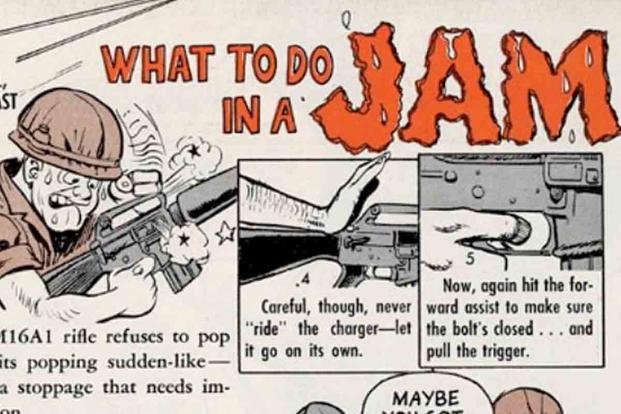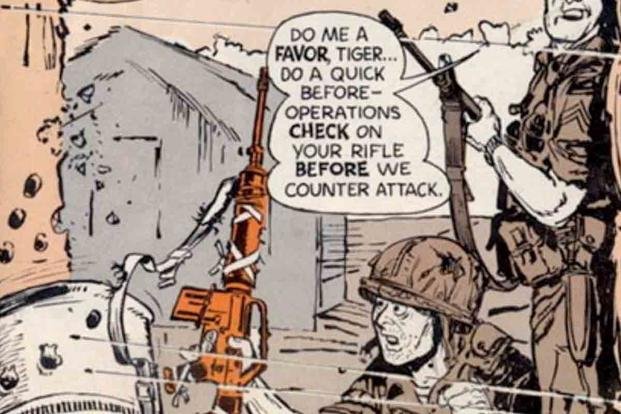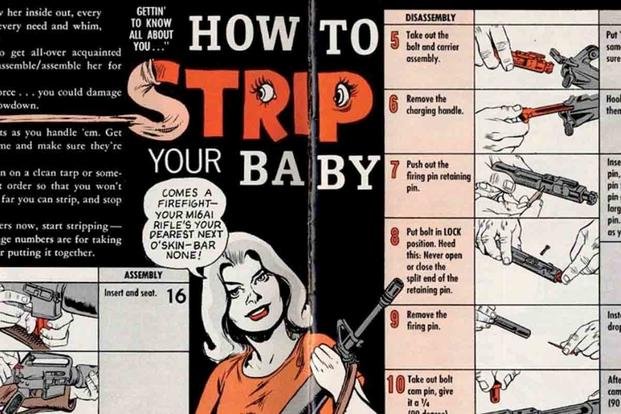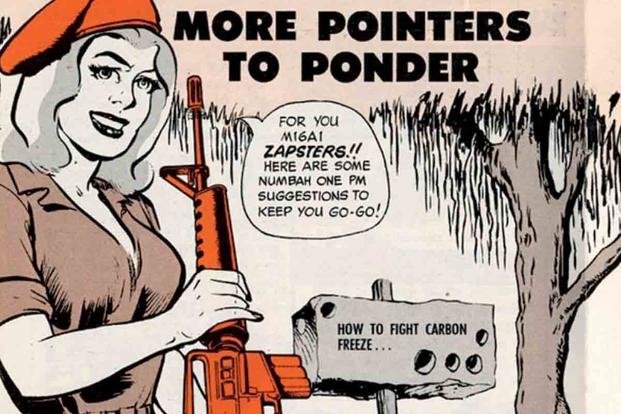
By Blake Stilwell
The introduction of the M16 as the standard infantry rifle for the U.S. military was supposed to be a revolution. After spending a few years with the bulky M14, American soldiers were going to carry a new, lightweight rifle that had a larger-capacity magazine and lighter ammunition that was just as deadly.
Instead of making the lives of U.S. troops easier, it threatened them, almost from the start. The rifles were delivered to troops in Vietnam in 1965 without cleaning kits or manuals on how to clean them. The rifles stopped working in the middle of firefights, spent cartridges were not extracted automatically and American soldiers and Marines were found dead next to disassembled rifles.
It wasn’t just the rifle’s engineering that hurt its ability in combat. The new 5.56 round used a dirtier kind of powder as a propellant. It made the weapon more likely to jam. American troops didn’t help much, either; they believed the marketing information of the rifle and thought the weapon was self-cleaning.

In 1967, the M16A1 was introduced, and the newest iteration included a number of fixes intended to address the problems noted by U.S. troops in combat. A chrome-plated bore was part of the new weapon to fix the corrosion and extraction problems. An improved buffer was added to reduce wear while firing on automatic.
Most importantly, the new M16A1 came with a cleaning kit, lubricant and an entertaining field manual, drawn by Will Eisner, the former Army comic artist who designed vehicle manuals in World War II. It was called “The M-16A1 Rifle: Operation and Preventative Maintenance,” otherwise known as “Department of the Army Pamphlet 750-30.”
The first chapter is titled “How to Strip Your Baby” and features a female guide who looks like an actress who could have been lifted from any of the teen beach movies of the 1950s and ’60s, using GI slang from Vietnam. Another character is a female magazine named “Maggie” who tells troops how to handle her, especially in the heat and humidity of Vietnam’s jungles. Other chapters include “Sweet-16” and “All the Way with Negligee.”

Eisner’s comic manual was a masterwork that U.S. troops actually read and learned quickly. The common misconceptions about the rifle, along with the mechanisms that most often saw dirt, debris and damage (and thus special cleaning), were addressed. “Maggie’s” issues, corrosion caused by Vietnam’s humid climate that could cause rifles to jam up, also were addressed by the manual.
The comic was easy to read, entertaining and — above all — a familiar look to American GIs in Vietnam. Many of them would have been familiar with “The Spirit,” a comic about a Batman-like masked vigilante that Eisner created before the United States entered World War II.
By 1968, more American troops in Vietnam began to accept the use of the rifle as malfunction incidents decreased dramatically. The powder used in the 5.56 cartridge was upgraded to reduce the fouling of various parts of the weapon. By 1969, the M16A1 was fully accepted as the standard infantry weapon for the U.S. military.

Reports even indicated that the M16A1 and its new configuration actually saved more lives in Vietnam than would have been saved if the M14 had been the standard weapon.





